10 Best Image Recognition Software
Image Recognition technology has taken a great leap forward in the past few years. With the introduction and immense development of machine learning. Image recognition has come a long way. Tools built on various platforms like Python, C++, Java, and more, you get an advanced structure that can easily be used for image recognition on various operating systems like Windows, macOS, and Linux, amongst others.
For different purposes and requirements, you may need image recognition software. There are multiple alternatives available on the internet for the same. However, some of these tools may fail to meet your requirements. Hence, to help you get the best, we are presenting some of the top photo recognition software with open source. This open-source base of tools allows you to modify them as per your needs. Check out the entire list and then download the one you like the most as well as that meets your requirements perfectly.
Top 10 Software
1. Syte

Syte is the world’s first product discovery platform. Powered by visual AI, we’re spearheading the evolution of eCommerce by enabling brands and retailers to seamlessly connect shoppers with products they love.
Our solutions, including camera search, personalization engines, and smart in-store tools, empower shoppers to discover and purchase products in the same way they live their lives — instant, intuitive, visual. Leading brands and retailers partner with Syte to provide on-demand, hyper-personalized experiences that drive conversion, increase average order value, and spark lifelong loyalty.
2. Face++

Face++ recognition technology can recognize persons’ identities automatically from image and video. Our technology is widely used in security, VIP recognition, photo tagging and face login.
KEY FEATURES
Facial Recognition:
Face++ detects and locates human faces within an image, and returns high-precision face bounding boxes. Face detection is the first step to analyzing and processing faces, Face++ also allows you to store metadata of each detected face for future use.
Body Recognition:
Face++ detects and locates human bodies within an image, and returns high-precision body bounding boxes. Body detection is the first step to analyzing and processing bodies. You can perform body attributes analysis on each detected body image, to get more detailed body-related information.
3. Azure Content Moderator

Azure Content Moderator is an AI service that lets you handle content that is potentially offensive, risky, or otherwise undesirable. It includes the AI-powered content moderation service which scans text, image, and videos and applies content flags automatically.
You may want to build content filtering software into your app to comply with regulations or maintain the intended environment for your users.
This documentation contains the following article types:
- Quickstarts are getting-started instructions to guide you through making requests to the service.
- How-to guides contain instructions for using the service in more specific or customized ways.
- Concepts provide in-depth explanations of the service functionality and features.
- Tutorials are longer guides that show you how to use the service as a component in broader business solutions.
4. AWS Amazon Rekognition
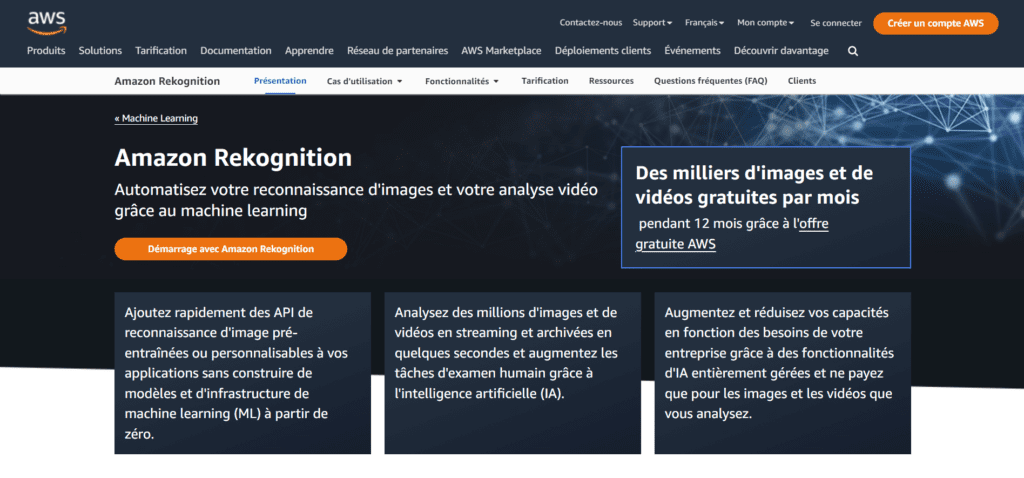
Amazon Rekognition makes it easy to add image and video analysis to your applications. You just provide an image or video to the Amazon Rekognition API, and the service can identify objects, people, text, scenes, and activities. It can detect any inappropriate content as well. Amazon Rekognition also provides highly accurate facial analysis, face comparison, and face search capabilities. You can detect, analyze, and compare faces for a wide variety of use cases, including user verification, cataloging, people counting, and public safety.
Amazon Rekognition is based on the same proven, highly scalable, deep learning technology developed by Amazon’s computer vision scientists to analyze billions of images and videos daily. It requires no machine learning expertise to use. Amazon Rekognition includes a simple, easy-to-use API that can quickly analyze any image or video file that’s stored in Amazon S3. Amazon Rekognition is always learning from new data, and we’re continually adding new labels and facial comparison features to the service.
5. Vue.ai

Vue.ai is an end-to-end retail automation platform that is trusted by over 100+ retailers across the globe, including Diesel, Nordstrom, Tata Cliq, Mercado Libre, ThredUp, and many more. Vue.ai is redesigning the future of retail with Artificial Intelligence. Using Visual AI and ML algorithms, Vue.ai’s suite of products addresses retail’s biggest problems- from improving productivity to driving revenues.
Our AI platform is used for- Automated catalog management ; Automated image moderation (for marketplaces) ; Automated on-model imagery; AI-enabled styling and outfitting ; AI-enabled dynamic 1:1 personalization ; Personalized shopper journeys.
6. Google Cloud AI
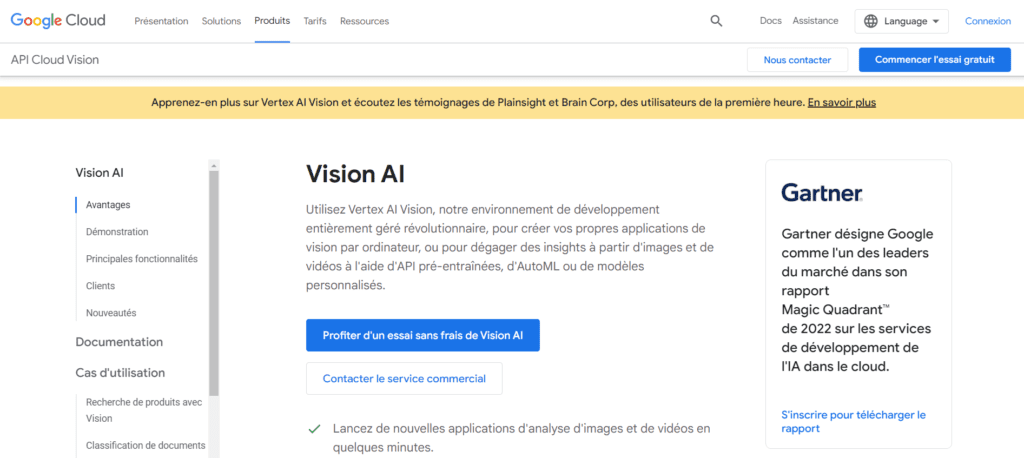
Along with reverse image search, Google Vision AI includes preparing customized image models, or use an already trained Google supply.
Among different image recognition tools, this tool helps you to feed in an image source for vision analysis to explain its features.
Unlike other image recognition tools, this tool provides a free trial and can be used for all kinds of purposes whether it is about quality review to product searches.
Google Image Recognition tools have been commonly used by many businesses.
It is relevant to reverse image search, where simply uploading a picture could provide a list of sites on the internet and display a similar image. Well, now brands can search with the help of google lens.
7. Scikit-image
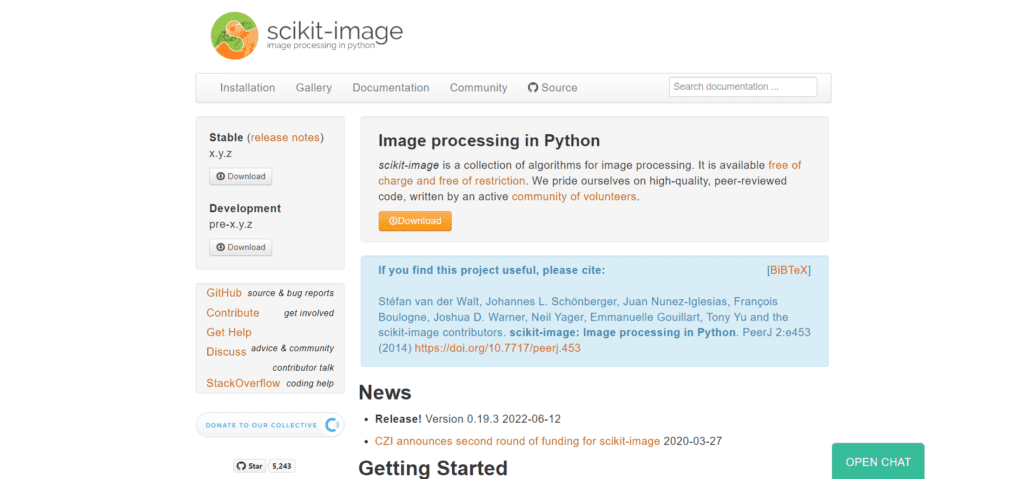
scikit-image (formerly scikits.image) is an open-source image processing library for the Python programming language. It includes algorithms for segmentation, geometric transformations, color space manipulation, analysis, filtering, morphology, feature detection, and more.It is designed to interoperate with the Python numerical and scientific libraries NumPy and SciPy.
The scikit-image project started as scikits.image, by Stéfan van der Walt. Its name stems from the notion that it is a “SciKit” (SciPy Toolkit), a separately-developed and distributed third-party extension to SciPy.The original codebase was later extensively rewritten by other developers. Of the various scikits, scikit-image as well as scikit-learn were described as “well-maintained and popular” in November 2012. Scikit-image has also been active in the Google Summer of Code
8. OpenCV

OpenCV (Open Source Computer Vision Library) is an open source computer vision and machine learning software library. OpenCV was built to provide a common infrastructure for computer vision applications and to accelerate the use of machine perception in the commercial products. Being an Apache 2 licensed product, OpenCV makes it easy for businesses to utilize and modify the code.
The library has more than 2500 optimized algorithms, which includes a comprehensive set of both classic and state-of-the-art computer vision and machine learning algorithms. These algorithms can be used to detect and recognize faces, identify objects, classify human actions in videos, track camera movements, track moving objects, extract 3D models of objects, produce 3D point clouds from stereo cameras, stitch images together to produce a high resolution image of an entire scene, find similar images from an image database, remove red eyes from images taken using flash, follow eye movements, recognize scenery and establish markers to overlay it with augmented reality, etc. OpenCV has more than 47 thousand people of user community and estimated number of downloads exceeding 18 million. The library is used extensively in companies, research groups and by governmental bodies.
Along with well-established companies like Google, Yahoo, Microsoft, Intel, IBM, Sony, Honda, Toyota that employ the library, there are many startups such as Applied Minds, VideoSurf, and Zeitera, that make extensive use of OpenCV. OpenCV’s deployed uses span the range from stitching streetview images together, detecting intrusions in surveillance video in Israel, monitoring mine equipment in China, helping robots navigate and pick up objects at Willow Garage, detection of swimming pool drowning accidents in Europe, running interactive art in Spain and New York, checking runways for debris in Turkey, inspecting labels on products in factories around the world on to rapid face detection in Japan.
It has C++, Python, Java and MATLAB interfaces and supports Windows, Linux, Android and Mac OS. OpenCV leans mostly towards real-time vision applications and takes advantage of MMX and SSE instructions when available. A full-featured CUDA and OpenCL interfaces are being actively developed right now. There are over 500 algorithms and about 10 times as many functions that compose or support those algorithms. OpenCV is written natively in C++ and has a templated interface that works seamlessly with STL containers.
9. Clarifai
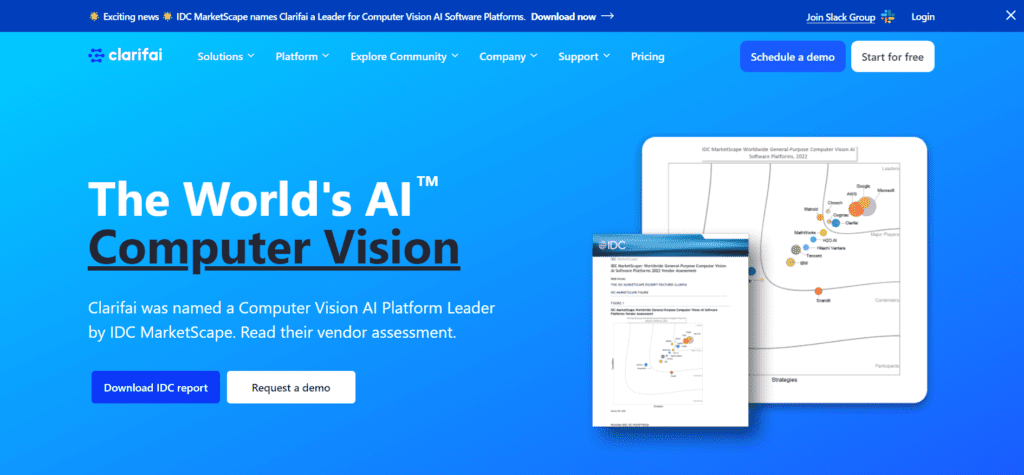
Clarifai offers an end-to-end AI platform for computer vision, natural language processing, and audio recognition. We help enterprises and public sector organizations transform unstructured images, video, text, and audio data into actionable insights significantly faster and more accurately than humans would be able to do on their own. We help our customers, across multiple industries, create innovative AI solutions for intelligence, surveillance, and reconnaissance; brand safety and moderation; digital asset management; product recommendations and visual search; visual inspection; document and media analysis and more.
Clarifai has won numerous awards and is recognized by Forrester as a leader in computer vision platforms in line with companies such as Google and Microsoft. The company was founded in 2013 by CEO Matt Zeiler, Ph.D., after winning the top 5 places at ImageNet. Clarifai is headquartered in Wilmington, Delaware and continues to grow with 100+ employees with offices in San Francisco, DC, and Tallinn, Estonia.
10. SimpleCV tutorial
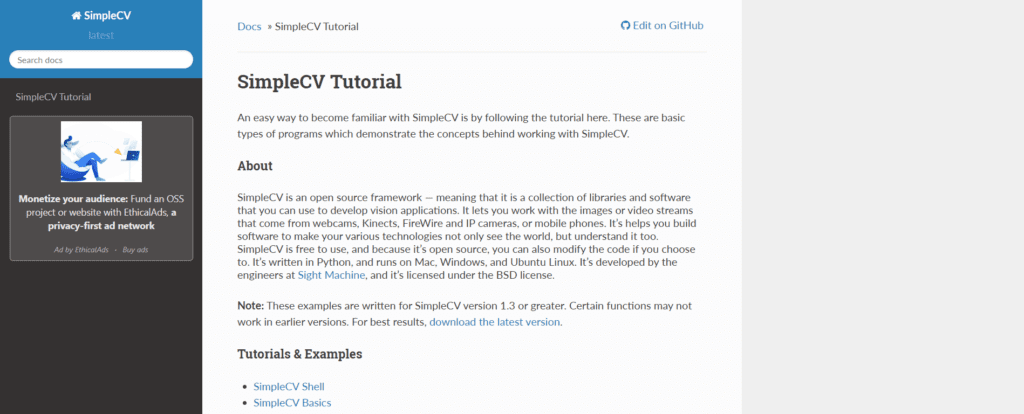
SimpleCV is an open source framework — meaning that it is a collection of libraries and software that you can use to develop vision applications. It lets you work with the images or video streams that come from webcams, Kinects, FireWire and IP cameras, or mobile phones. It’s helps you build software to make your various technologies not only see the world, but understand it too. SimpleCV is free to use, and because it’s open source, you can also modify the code if you choose to. It’s written in Python, and runs on Mac, Windows, and Ubuntu Linux. It’s developed by the engineers at Sight Machine, and it’s licensed under the BSD license.
Conclusion
Image recognition tools have become an important part of our lives, and one thing’s for sure, they’re here to stay.
Whether you want to use them to gain a deeper understanding of the wants and needs of your customers, to get informed in real-time when your company appears in a context that could result in a damaged brand reputation, or to create targeted marketing campaigns .
You can also review image recognition tools by other vendors, such as DeepAI, Hive, Nanonets, or Imagga.
Image and video moderation API by Sightengine, xModerator’s image moderation service, or APIs and SDKs for facial recognition and body recognition.
But the basic requirement is logo detection, object, and location analysis for the images as it puts this evaluation in the broader framework of global industry trends.





